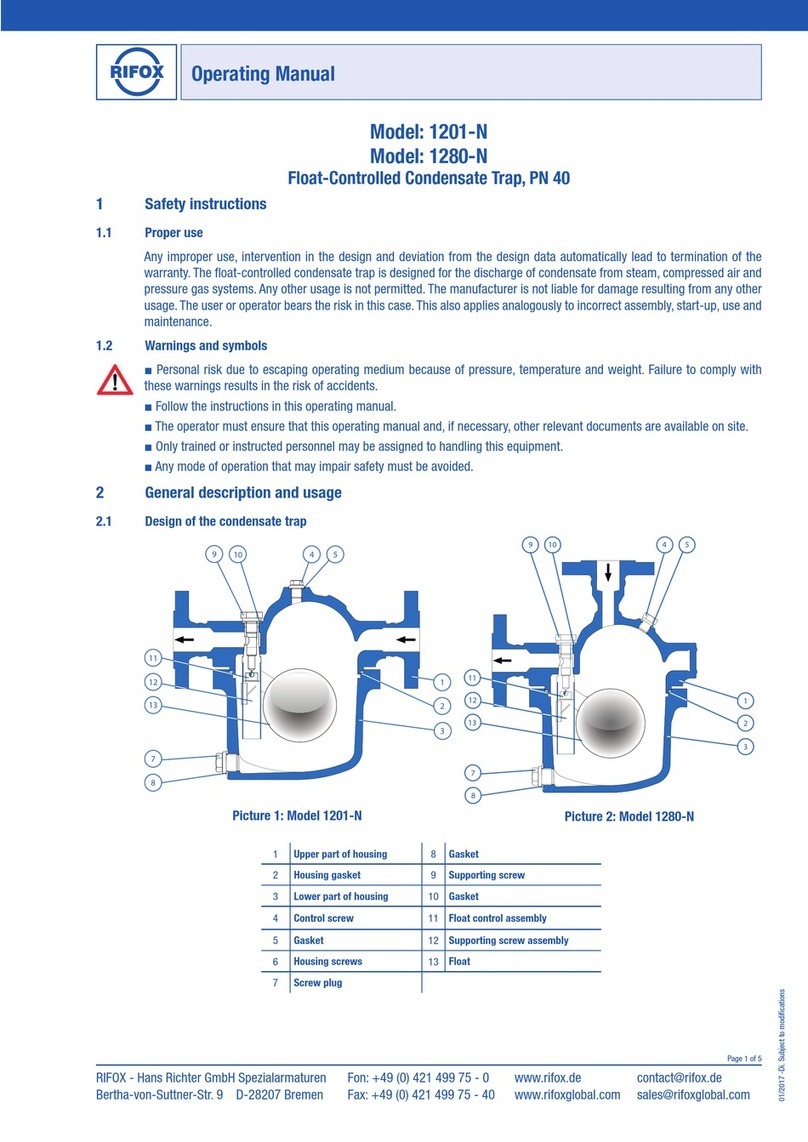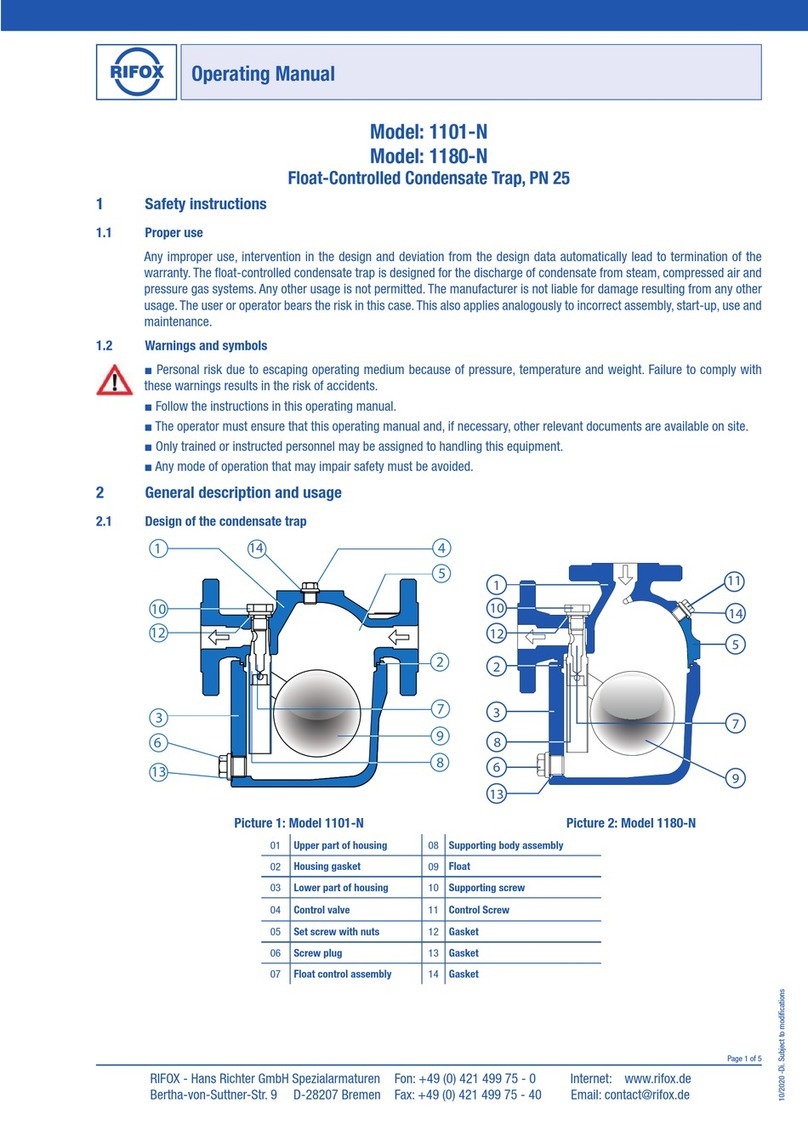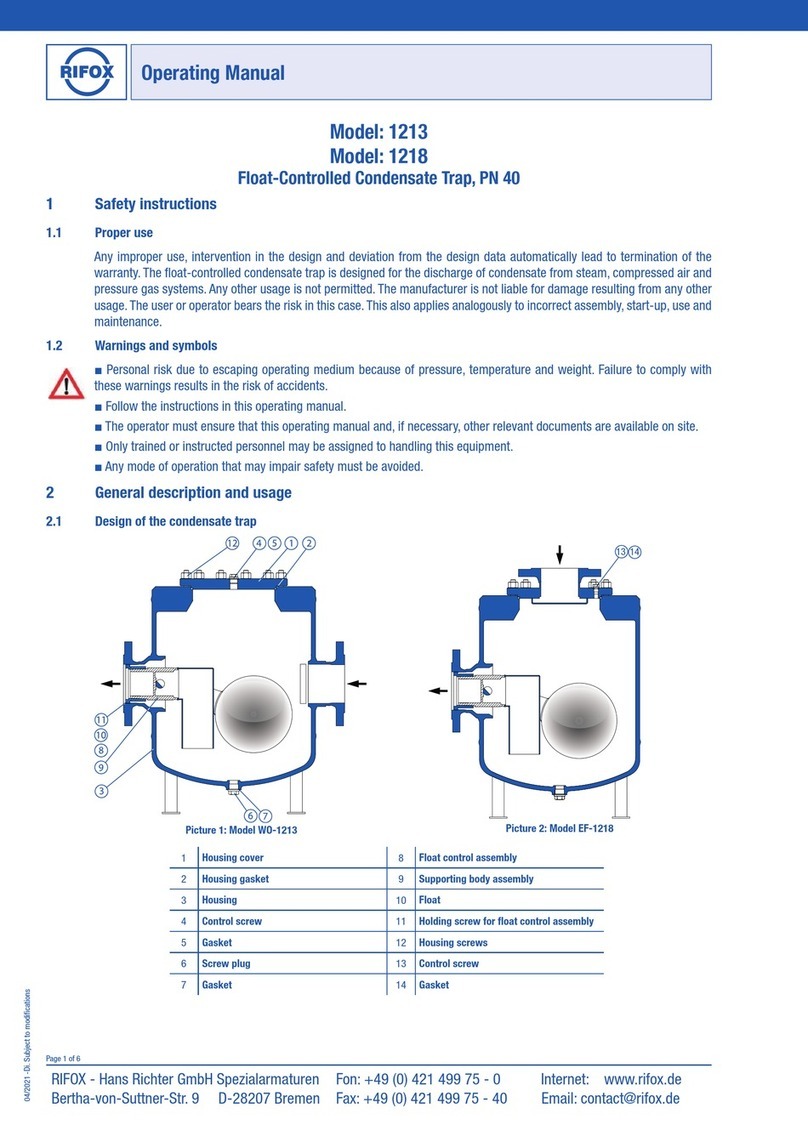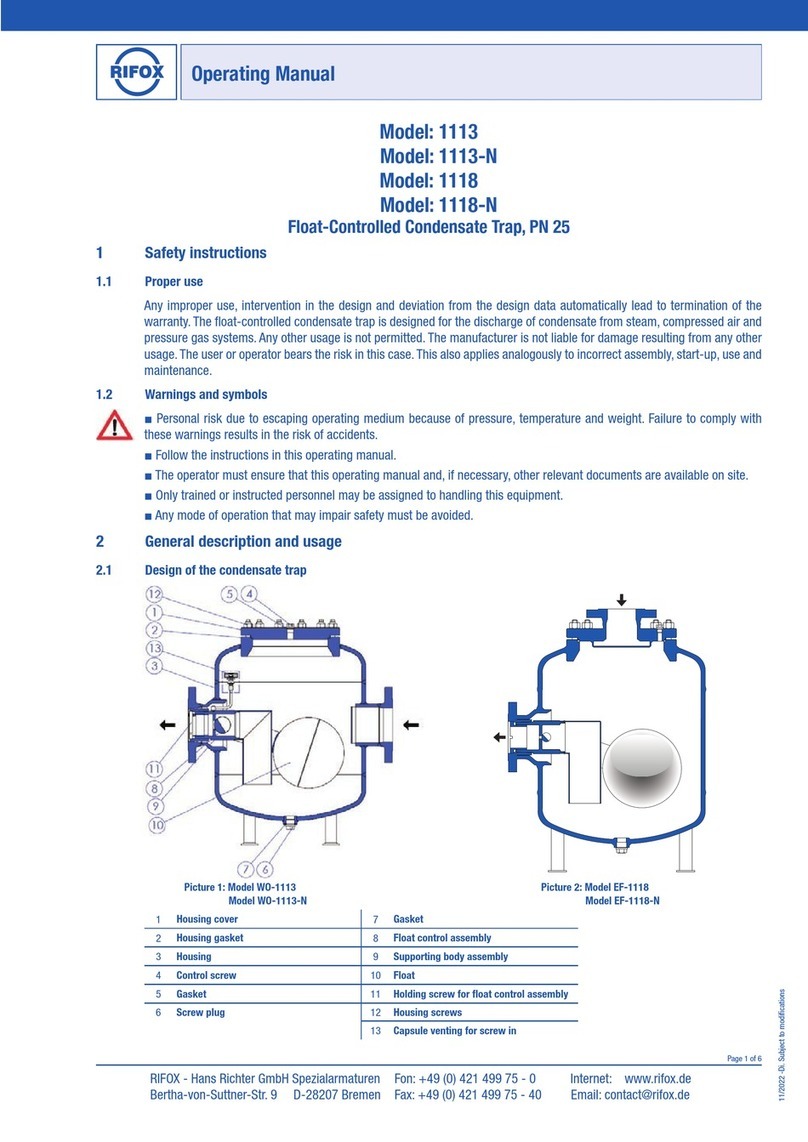
Operating Manual
RIFOX - Hans Richter GmbH Spezialarmaturen Fon: +49 (0) 421 499 75 - 0 Internet: www.rifox.de
Bertha-von-Suttner
-Str
.
9
D-28207
Bremen
F
ax:
+49
(0)
421
499
75
-
40
Email:
[email protected]11/2021 -Di. Subject to modifications
Page 5 of 7
6.2 Disassembling, cleaning and assembling the float control (Picture 7)
■After removing the cotter pin (p), the rotary valve (v) can be simply pulled out
to the side.
■Clean the parts using, for example, benzine.
■Check the rotary valve (v) for wear along the sealing edge. If wear is detected,
the support body (b) together with the rotary valve (v) must be replaced. The
exactly leakage test must be carried out by RIFOX.
■During assembly ensure that the notch in the rotary valve (v) points to the
punch mark on the support body (b) and the cotter pin (p) is inserted and secured
again carefully.
■It must be possible to move the float up and down easily by hand.
6.3 Installation of the float control assembly and assemble the condensate trap
■ To install the control unit in Model 1200-N (Housing material: stainless steel), please use the delivered installation set.
(Copper gasket and installation bolt).
■The complete float control assembly (9) is inserted into the conical housing seat with the support body. It must be ensured
that the tube is positioned vertically downwards.
■ Screw in the installation bolt with copper gasket into the thread of the supporting body and tighten it with a wrench.
(Tighten torque see Sec. 6.6). Screw out the installation bolt, replace the copper gasket with a standard gasket (11). Atten-
tion: This step is only for Model 1200-N!
■Screw in the supporting screw (8) with gasket (17) and tighten evenly crosswise using a standard ring wrench. Tightening
torque according to Section 6.6.
■Check the housing gasket (2), replace it it is damaged.
■Put on the housing flange part (1).
■Tighten the housing screws (5) evenly crosswise. Tightening torque according to Section 6.6.
6.4 RIFObi automatic venting valve for Model 1200 / 1200-G (Picture 8)
Function: Startup and continuous venting takes place inward, i.e. towards the conden-
sate side. Near the temperature of ebullition the bimetal valve closes. When the tempera-
ture drops, the bimetal valve opens.
Replace the bimetal valve (10.3):
■Dismantle the complete float control assembly (9) as described in Section 6.1.
■Loosen the hexagon nut (10.5) with wrench size 5.
■Dismantle the Bimetal valve (10.3).
■Visual check the seat part of valve gate (10) and of bimetal valve (10.3) for wear (cross
scoring).
■Replace the bimetal valve (10.3).
■Install the float control assembly (9) as described in Section 6.3.
6.5 Care and maintenance
■In the case of a great risk of dirt accumulation, the housing, when it is depressurized, should be rinsed thoroughly from
time to time. If necessary, the float control assembly (9) should also be checked according to Section 6.2.
■The dirt, which has been accumulated in the housing, can be removed away by screwing off the screw plug (6).
■For special applications, it is advisable to install a separate upstream strainer.
■The float control assembly (9) usually does not to be special maintained. The maintenance depends primarily on the wear
resistance of the valve gasket. See Section 6.1 and 6.2.
bpv
Picture 7
10.3
10.5
Picture 8




























